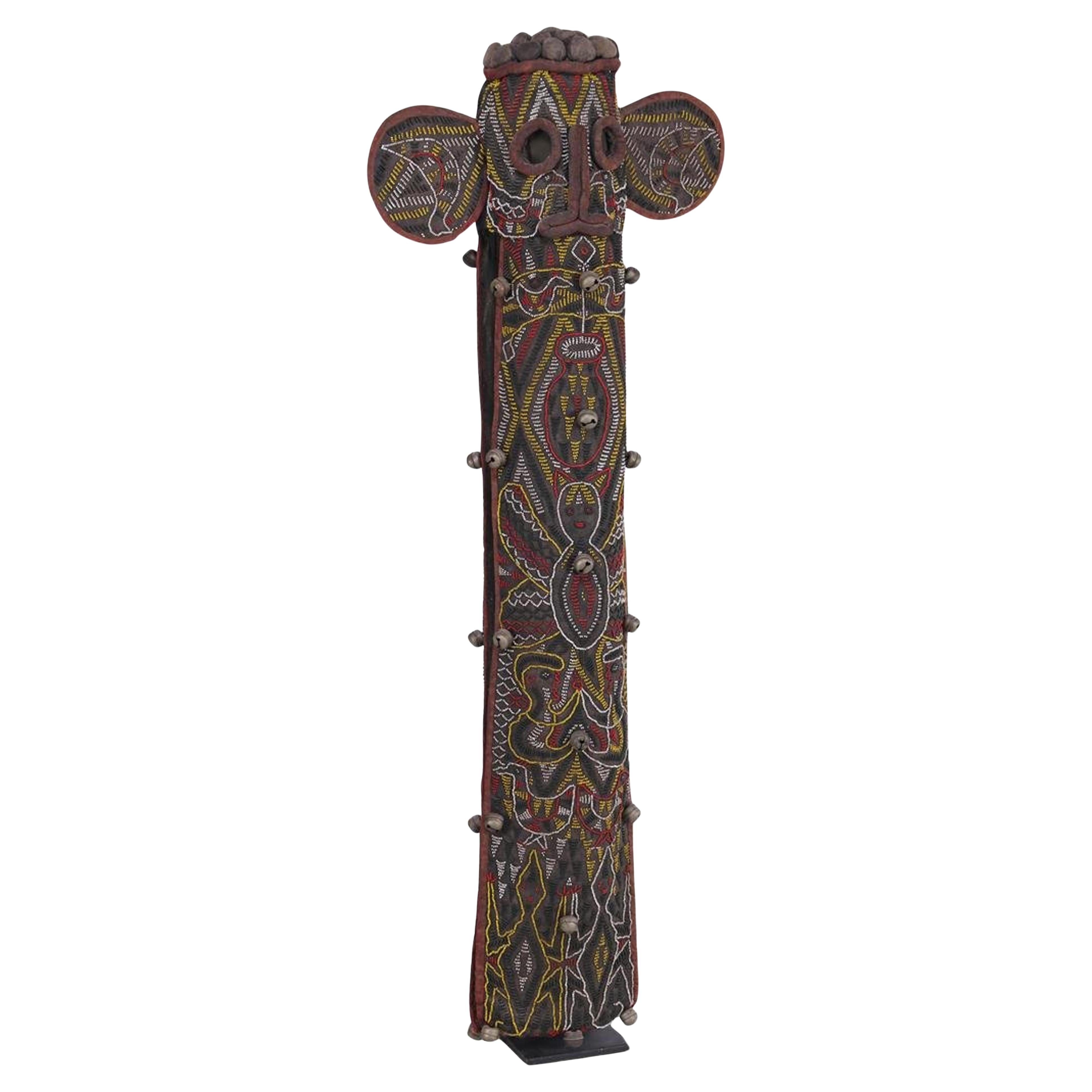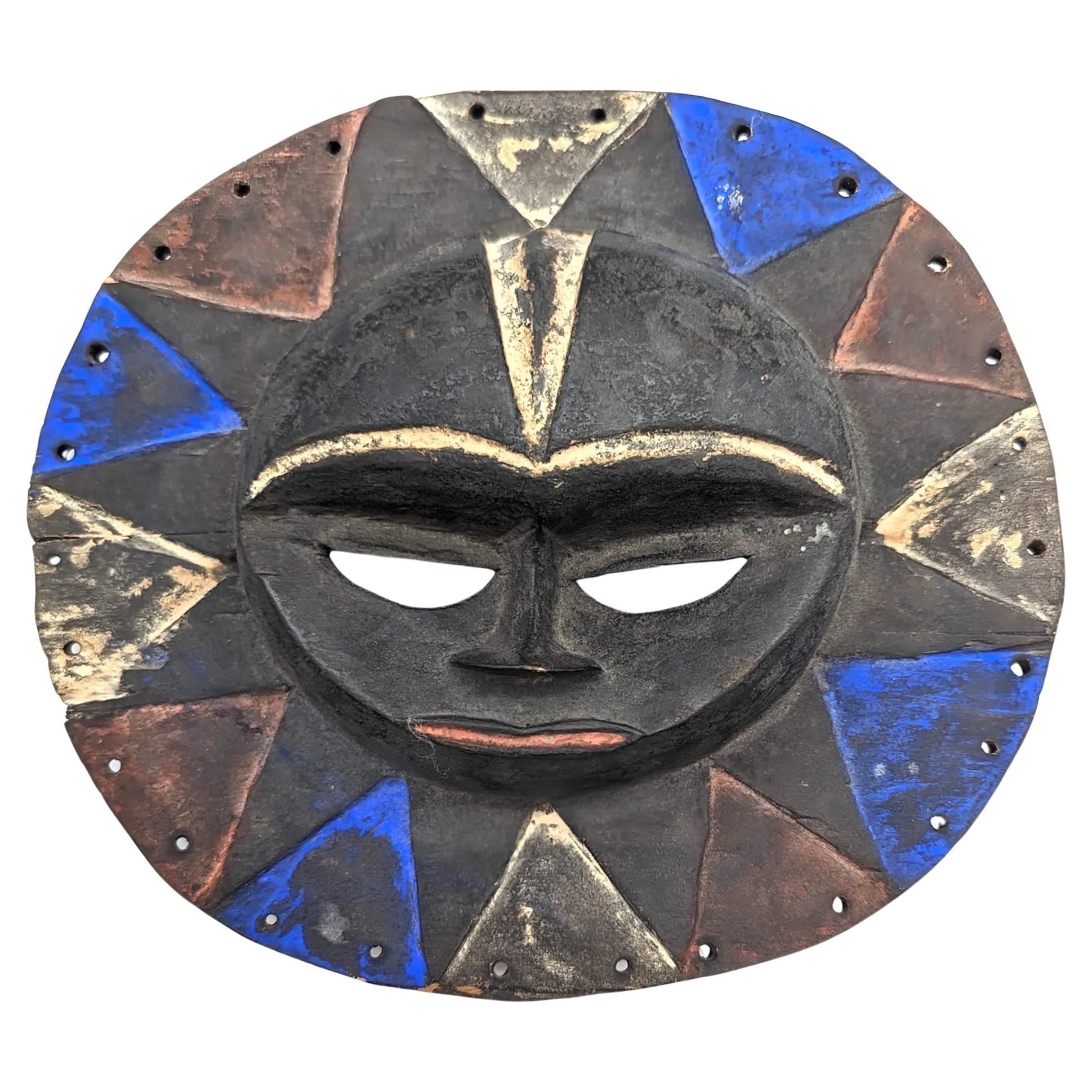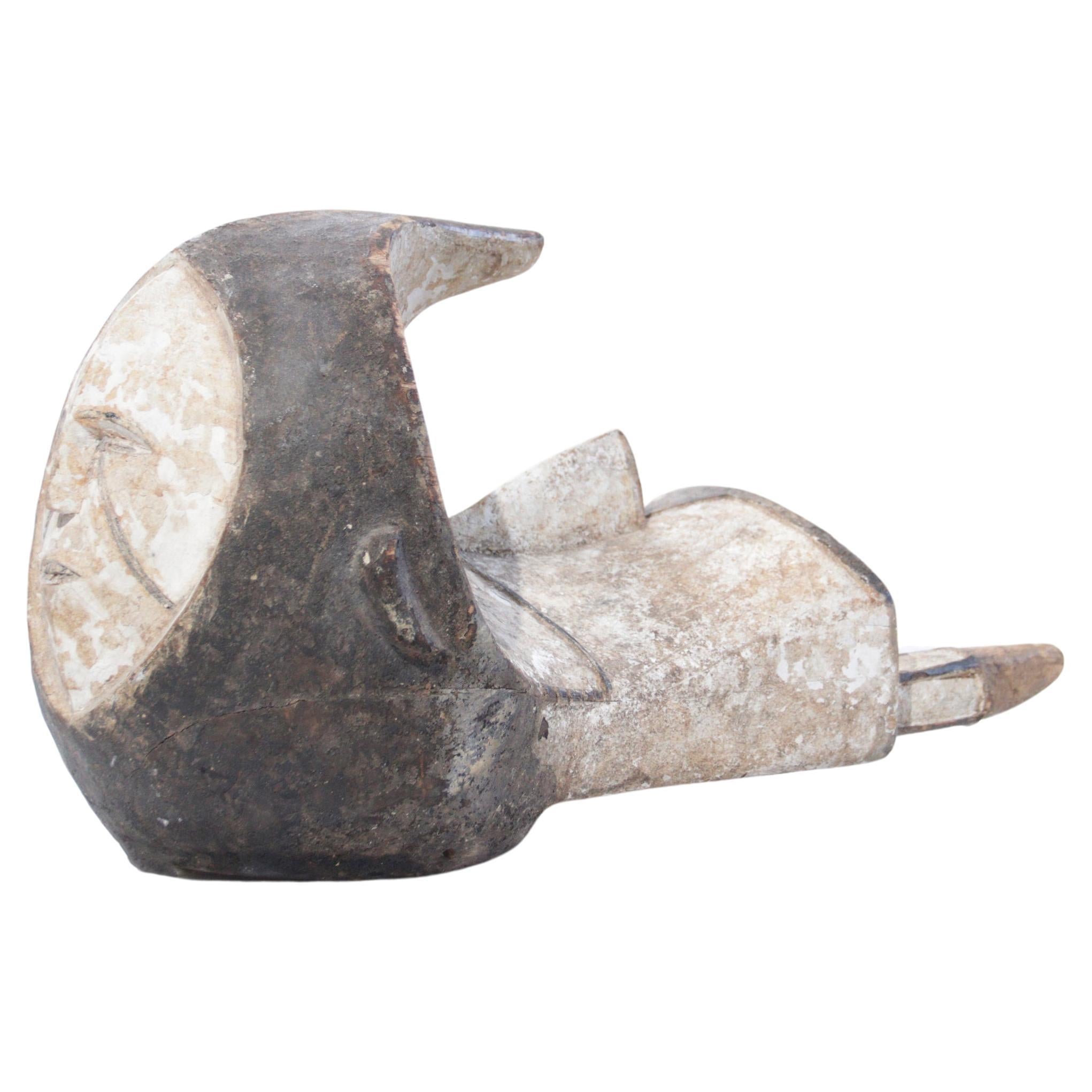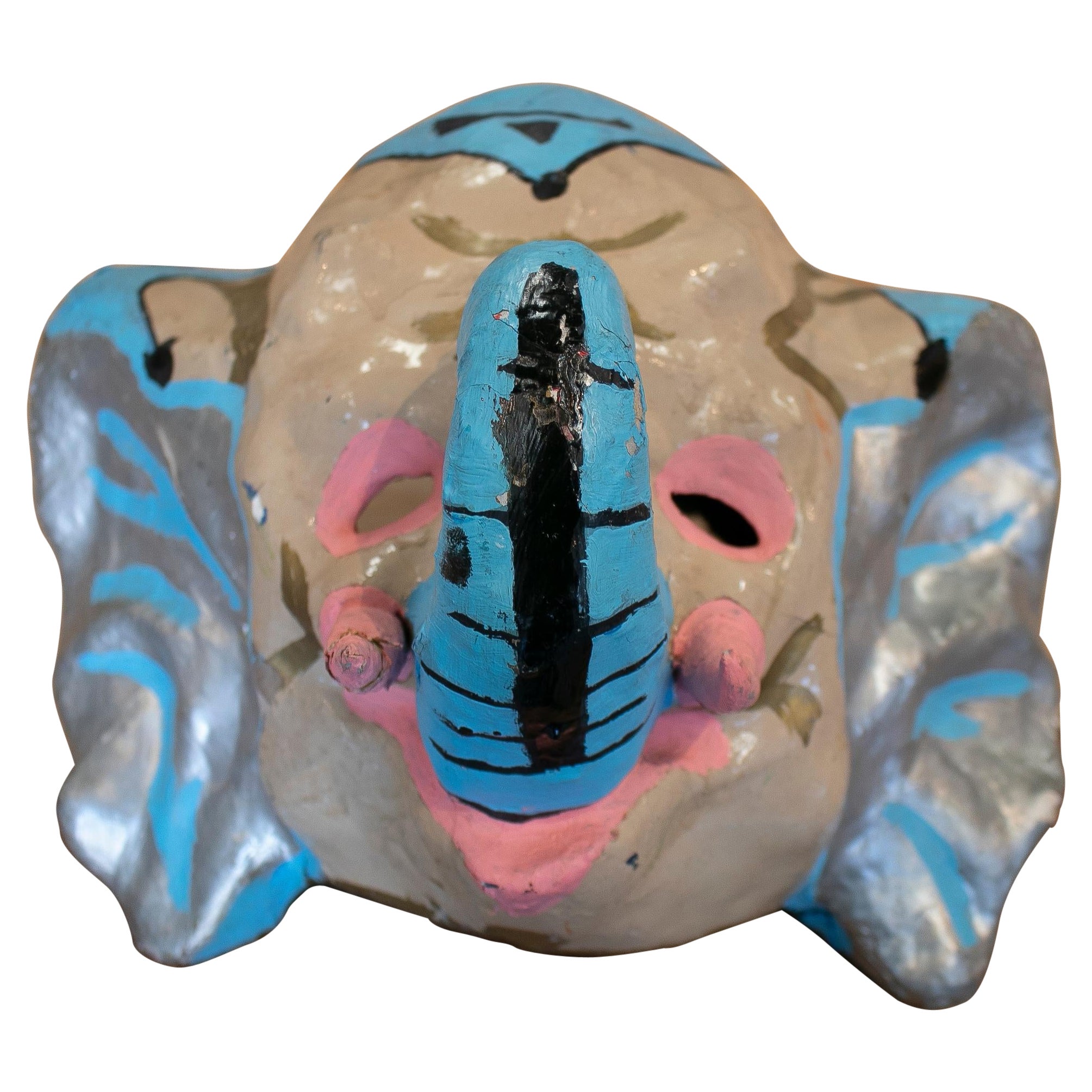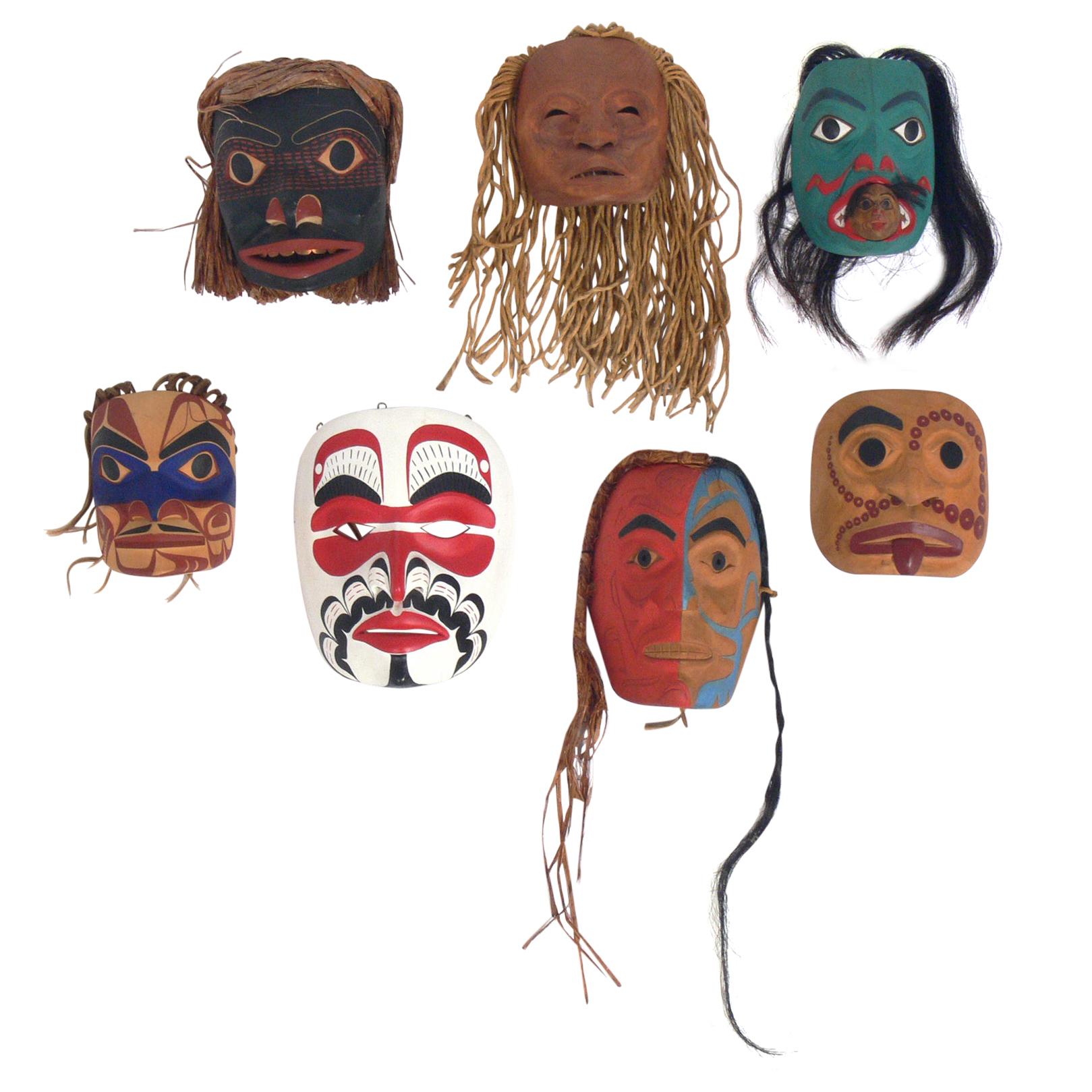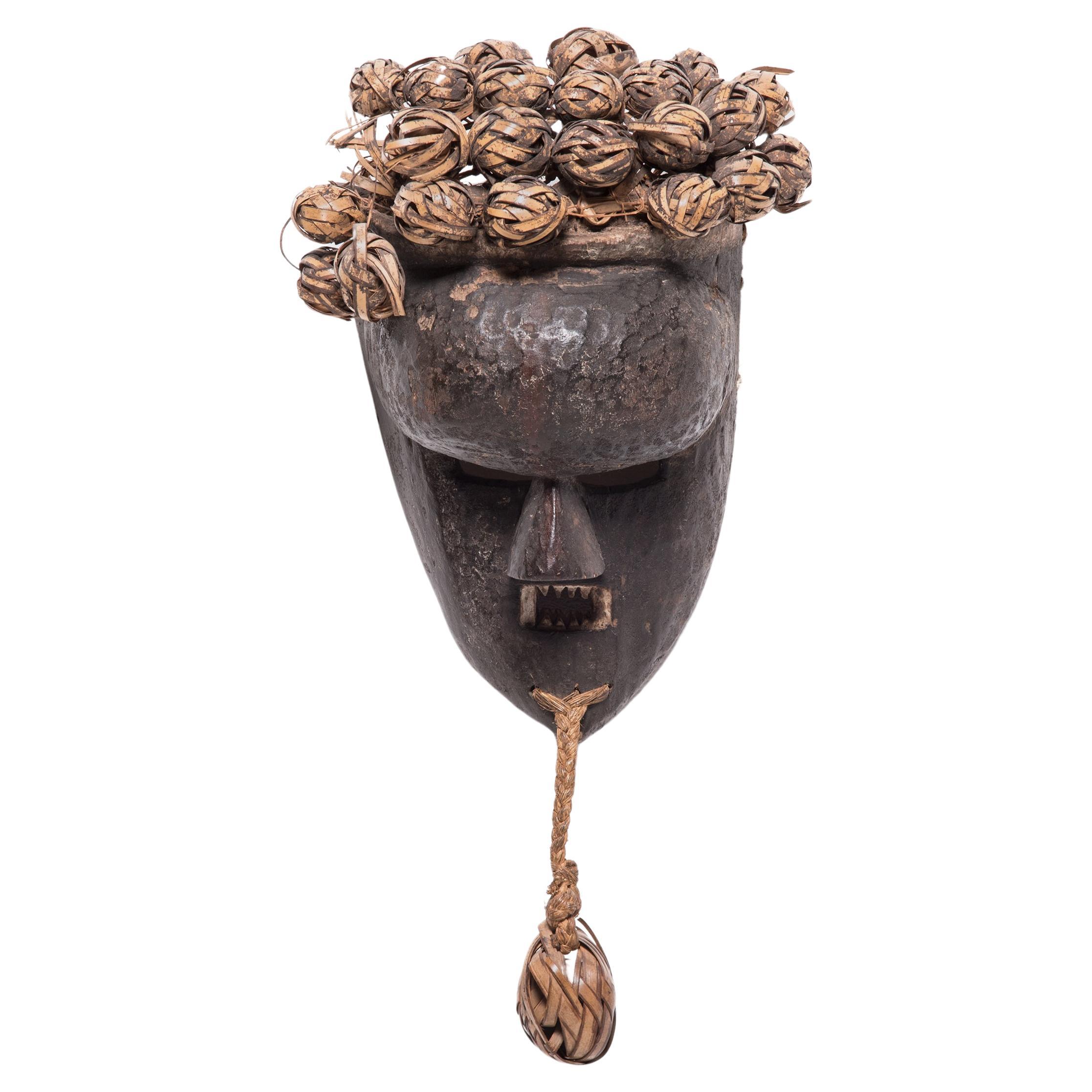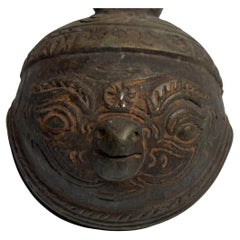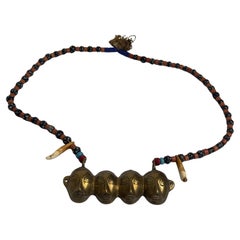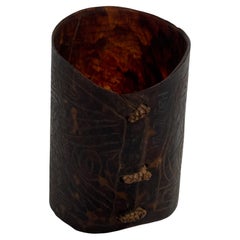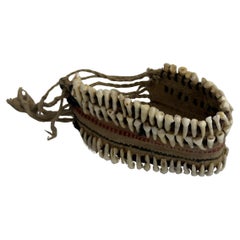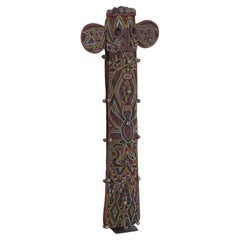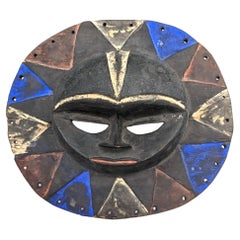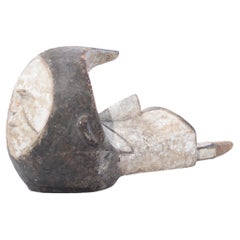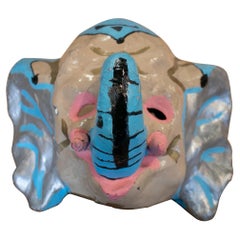Video Loading
Want more images or videos?
Request additional images or videos from the seller
1 of 5
A Kuosi society elephant mask
About the Item
Bamileke, Cameroon, early 20th century
Among the Bamileke people, only members of the Kuosi society (the elephant society) are permitted to perform elephant masquerades, symbolizing the authority, wealth, and power of the fon (king, ruler, or chief).
Performers wear a hooded mask featuring eyeholes bordered or adorned with beads, allowing for visibility. This mask may include other facial elements, such as a stylized nose or a small opening for the mouth. The hooded covering extends into two long panels—one in the front, resembling an elephant's trunk, and one in the back—accompanied by large discs that represent the elephant’s ears, which are typically circular but may be slightly oblong or trapezoidal. Additionally, performers adorn themselves with prestige garments: tunics or skirts made of ndop (patterned cotton fabric dyed with indigo), a conical headdress adorned with red feathers, and a leopard skin draped on the back. They may also hold a beaded horse-tail flywhisk, another symbol of prestige.
Provenance:
- Collection Rinck Hollnberger (Purchased in the 1980s or 1990s)
- Dimensions:Height: 54.34 in (138 cm)Width: 21.26 in (54 cm)Depth: 5.12 in (13 cm)
- Materials and Techniques:
- Place of Origin:
- Period:
- Date of Manufacture:Early 20th century
- Condition:Wear consistent with age and use.
- Seller Location:Amsterdam, NL
- Reference Number:1stDibs: LU5458242205462
About the Seller
5.0
Recognized Seller
These prestigious sellers are industry leaders and represent the highest echelon for item quality and design.
Established in 1985
1stDibs seller since 2020
23 sales on 1stDibs
Typical response time: 1 hour
- ShippingRetrieving quote...Shipping from: Maastricht, Netherlands
- Return Policy
Authenticity Guarantee
In the unlikely event there’s an issue with an item’s authenticity, contact us within 1 year for a full refund. DetailsMoney-Back Guarantee
If your item is not as described, is damaged in transit, or does not arrive, contact us within 7 days for a full refund. Details24-Hour Cancellation
You have a 24-hour grace period in which to reconsider your purchase, with no questions asked.Vetted Professional Sellers
Our world-class sellers must adhere to strict standards for service and quality, maintaining the integrity of our listings.Price-Match Guarantee
If you find that a seller listed the same item for a lower price elsewhere, we’ll match it.Trusted Global Delivery
Our best-in-class carrier network provides specialized shipping options worldwide, including custom delivery.More From This Seller
View AllA beautifully decorated Burmese bronze elephant bell
Located in Amsterdam, NL
Myanmar, 19th century
The bells were commonly crafted from bronze using the lost-wax casting technique, which enabled artisans to create intricate designs. Many showcase detailed mo...
Category
Antique 19th Century Burmese Sculptures and Carvings
Materials
Bronze
A beaded Naga 'Headhunter' trophy necklace
Located in Amsterdam, NL
Nagaland, North-east India, early 20th century
A necklace comprised of glass beads, two dog tooth and a brass face pendant. The four headed pendant symbolises decapitated head-troph...
Category
Antique 19th Century Indian Tribal Art
Materials
Brass
A delicate tortoiseshell 'armband' from the Lower Sepik River Province
Located in Amsterdam, NL
Sepik River Province, Papua New Guinea, probably late 19th century
Tortoiseshell bracelets are frequently more than just ornaments in Sepik River civilizations; they are representat...
Category
Antique Late 19th Century Papua New Guinean Tribal Art
Materials
Tortoise Shell
A monkeytooth bracelet from the Philippines
Located in Amsterdam, NL
Philippines, late 19th/early 20th century
Provenance:
Sammlung Rinck-Hollnberger, Munich (purchased the 1980s-1990s)
Category
Antique Late 19th Century Philippine Tribal Art
Materials
Natural Fiber, Teeth
A Huli wigman's ceremonial headdress
Located in Amsterdam, NL
Papua New Guinea, Central Highlands, Huli people, 1st half 20th century
Crafted from the wearer’s own hair and adorned with colorful bird-of-paradise feathers, flowers, scarab beetl...
Category
20th Century Papua New Guinean Tribal Art
Materials
Shell, Feathers
A beautiful black-and-white beaded necklace
Located in Amsterdam, NL
Bonda people, Orissa, early 20th century
The Bonda people are an indigenous tribal group predominantly found in the hilly areas of Malkangiri district in Odisha (Orissa), India. Recognized as one of the oldest and most traditional tribes in the country, they are often regarded as part of the "Adivasi," or the original inhabitants of the region.
Bonda women are renowned for their distinctive traditional attire and adornments. They wear a minimal garment called nala around their waist and embellish themselves with heavy jewelry crafted from beads, metal, and coins. Their hair is typically styled into a bun and covered with a beaded headpiece...
Category
Antique Late 19th Century Indian Tribal Art
Materials
Natural Fiber, Beads
You May Also Like
Bamileke elephant mask
Located in Diest, BE
Elephants are often associated with political power in the highly stratified kingdoms of the Cameroon grasslands. Because imported beads were historically rare and costly, beadwork i...
Category
Vintage 1950s Cameroonian Masks
Materials
Korhogo Cloth, Natural Fiber, Raffia, Beads
$1,683
Nigerian Wood-Carved "Ekpo Secret Society" Mask
Located in Miami, FL
Acquired from Albert F. Gordon's Tribal Arts Gallery in Manhattan in the early 1970s, this is an Eket-style mask, typical of the Nigerian tribe that resides in the Southeastern regio...
Category
Early 20th Century Nigerian Tribal Masks
Materials
Wood, Paint
Ibo-Izzi, Nigeria Old ‘Ogbodo Enyi’ Elephant Mask
Located in Boven Leeuwen, NL
This mask type of the Ibo-Izzi, a subgroup of the Ibo, is actually a dance crest. The elephant mask 'ogbodo enyi' is worn horizontally on top of the head...
Category
Early 20th Century Nigerian Tribal Antiquities
Materials
Wood
1950s Spanish Elephant Head Hand Painted Papier-mâché Festival Mask
Located in Marbella, ES
Popular 1950s Spanish elephant head hand painted papier-mâché mask worn during village festivals.
Category
Mid-20th Century Spanish Masks
Materials
Paper
Masks
By (after) Pablo Picasso
Located in Atlanta, GA
Selection of Pacific Northwest Native style masks, hand carved and painted by sculptor, circa 1990s. They measure: Top row, left to right: 9"H...
Category
1990s Canadian Tribal Masks
Materials
Wood
$450 / item
Salampasu Mask
Located in Chicago, IL
This ceremonial African mask is linked to the Salampasu people of the Bantu ethnic group located primarily in the Democratic Republic of Congo. Salampasu masks...
Category
Mid-20th Century Congolese Folk Art Masks
Materials
Wood, Bamboo
$980
